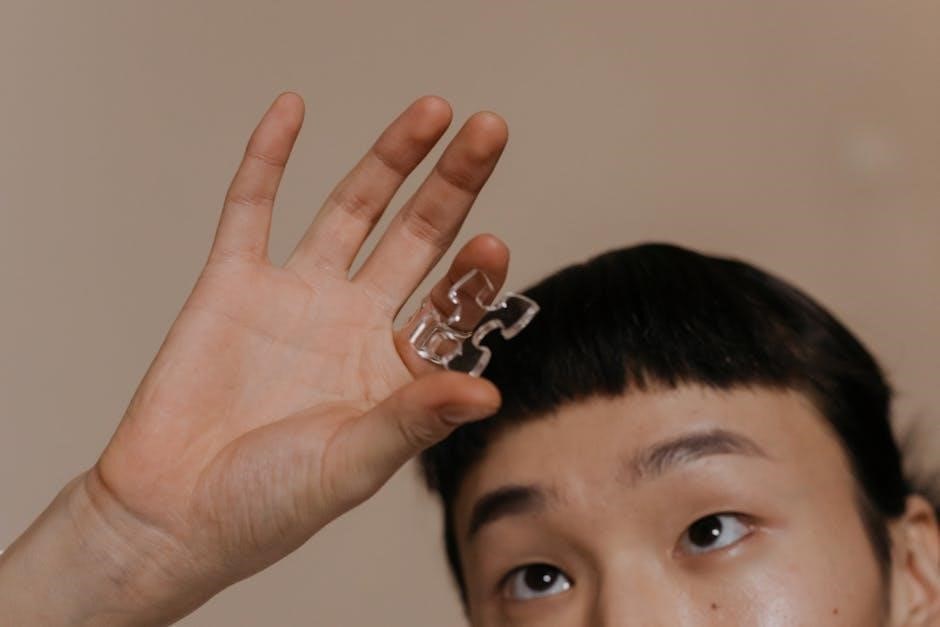postural assessment pdf
Postural Assessment PDF⁚ A Comprehensive Guide
This comprehensive guide provides a detailed overview of postural assessment, including checklists for anterior, posterior, and lateral views. It covers identifying common postural deviations like Pes Planus and crossed syndromes, and explains the dynamic overhead squat assessment. Downloadable PDF checklists simplify the process.
Postural assessment checklists are invaluable tools for healthcare professionals, fitness trainers, and ergonomic specialists. These structured forms streamline the process of evaluating posture, ensuring a consistent and thorough examination. Checklists typically guide the assessor through a systematic observation of the body from anterior (front), posterior (back), and lateral (side) views. Key aspects assessed often include the alignment of body segments – ankles, knees, hips, shoulders, and head – relative to a plumb line (an imaginary vertical line through the body). Deviations from ideal alignment are noted, helping to identify potential postural imbalances. The checklists may also include space for recording observations on muscle imbalances, such as overactivity or underactivity in specific muscle groups. This detailed information facilitates a comprehensive understanding of postural deviations and aids in the development of targeted interventions. The use of checklists promotes objectivity, consistency, and accuracy in postural assessments, leading to more effective treatment strategies. They’re crucial for tracking progress over time, making them ideal for monitoring the effects of interventions or rehabilitation programs. Ultimately, checklists simplify the complex process of postural analysis, making it accessible and efficient for a wide range of practitioners.
Anterior View Assessment⁚ Key Considerations
The anterior view assessment focuses on evaluating symmetry and alignment from the front. Key considerations include observing the head for any lateral deviation or forward head posture. Assess the shoulders for levelness, noting any elevation or protraction (rounding forward). Examine the clavicles for symmetry; unevenness may indicate muscular imbalances. The position of the sternum should be observed; deviations can suggest spinal deformities or muscle tightness. Pay close attention to the rib cage, looking for any asymmetry or flaring. The abdomen should be assessed for any anterior protrusion (protruding stomach) or concavity (sinking in). Assess hip alignment, noting any discrepancies in height or rotation. Observe the knees for any valgus (knock-knees) or varus (bowlegs) deformities. Examine the ankles and feet, observing for any pronation (feet rolling inward) or supination (feet rolling outward); Finally, note the overall symmetry of the body, comparing the left and right sides for any discrepancies in posture. Remember to have the individual stand in a relaxed, natural posture to obtain the most accurate assessment. Detailed documentation of these observations is crucial for creating effective treatment plans.
Posterior View Assessment⁚ Key Considerations
The posterior view assessment provides crucial information about spinal alignment and symmetry. Begin by observing the head for any lateral tilt or rotation. Assess the shoulders for levelness, noting any elevation or winging of the scapulae (shoulder blades). Examine the spine for any lateral curvature (scoliosis) or excessive kyphosis (rounding of the upper back). Note the position of the pelvis, looking for any anterior or posterior tilt. Assess the gluteal muscles for symmetry; unevenness can indicate muscular imbalances. Observe the thighs and knees, checking for any rotation or discrepancies in alignment. Examine the lower legs and ankles, noting any pronation or supination. Pay close attention to the feet, looking for any pes planus (flat feet) or pes cavus (high arches). Observe the overall symmetry of the body, comparing the left and right sides for any postural deviations. The plumb line, an imaginary vertical line running from the earlobe through the center of gravity, can serve as a useful reference for evaluating postural alignment from the posterior view. Maintaining proper documentation of these observations is essential for comprehensive assessment and treatment planning. Remember, a relaxed, natural standing posture is crucial for accurate assessment.
Side View Assessment⁚ Key Considerations
The lateral view assessment focuses on evaluating the alignment of the body in the sagittal plane. Begin by observing the head’s position relative to the shoulders, noting any forward head posture. Assess the curvature of the cervical spine (neck), thoracic spine (upper back), and lumbar spine (lower back). Look for excessive lordosis (inward curve) in the lumbar spine or kyphosis (outward curve) in the thoracic spine. Examine the position of the pelvis, observing for any anterior or posterior tilt. Note the alignment of the hips, knees, and ankles, checking for any excessive flexion or extension. Observe the plumb line alignment – an imaginary vertical line passing through the earlobe, shoulder, hip, knee, and ankle – to identify any deviations. A plumb line can be used as a visual aid to assess postural alignment, helping to identify areas of potential imbalance. Assess the overall posture from the side, checking for any deviations from a natural, balanced stance. Note the position of the feet and ankles, observing for any excessive pronation or supination. Consider the overall body proportions and any asymmetries in the body’s profile. Document your observations thoroughly for a complete assessment. The side view offers unique insights into the body’s sagittal alignment, helping to identify postural issues often missed in other views.
Identifying Common Postural Deviations
Postural deviations represent imbalances in the body’s alignment, often stemming from muscle imbalances, repetitive movements, or structural issues. Identifying these deviations is crucial for effective intervention. Common postural deviations include forward head posture, where the head protrudes forward, straining neck muscles. Rounded shoulders, characterized by a slumped posture, often involve weakened upper back muscles and tight chest muscles. Increased thoracic kyphosis, or excessive outward curvature of the upper back, can cause discomfort and restricted breathing. Anterior pelvic tilt, where the pelvis tilts forward, is often linked to tight hip flexors and weak abdominal muscles. Posterior pelvic tilt, conversely, involves a backward tilt of the pelvis and can be associated with tight hamstrings; These deviations can contribute to pain, limited range of motion, and decreased functional capacity. A thorough assessment, using both static and dynamic methods, is crucial for accurate identification. Understanding the underlying causes, such as muscle imbalances or structural issues, is essential for developing effective treatment plans. These plans may involve targeted exercises, stretching, or manual therapy to correct the deviations and restore proper alignment.
Pes Planus Distortion Syndrome
Pes planus distortion syndrome, also known as flat foot syndrome, is a postural deviation characterized by the collapse of the medial longitudinal arch of the foot. This collapse leads to excessive pronation, or inward rolling of the foot, during weight-bearing. The resulting biomechanical changes can impact the entire kinetic chain, leading to various postural compensations throughout the body. Common compensatory patterns observed in individuals with pes planus include internal rotation of the tibia and femur, often resulting in knee valgus (knock-knees). Further up the kinetic chain, this can manifest as hip internal rotation and anterior pelvic tilt. The resulting muscle imbalances often involve overactivity of the gastrocnemius and soleus muscles (calf muscles) and underactivity of the tibialis posterior and peroneal muscles. These muscle imbalances contribute to the perpetuation of the postural deviation and can lead to pain in the feet, ankles, knees, hips, and even the lower back. Treatment typically involves addressing the underlying muscle imbalances through targeted strengthening and stretching exercises, along with the use of orthotics to support the arch of the foot and improve foot mechanics. Early identification and intervention are crucial in managing pes planus distortion syndrome and preventing the development of further compensatory patterns.
Lower and Upper Crossed Syndromes
Lower crossed syndrome (LCS) describes a postural distortion involving tightness in the hip flexors and lumbar extensors, coupled with weakness in the abdominal muscles and gluteals. This pattern often leads to an anterior pelvic tilt, increased lumbar lordosis (inward curvature of the lower back), and a forward head posture. The resulting muscle imbalances contribute to various musculoskeletal issues, including lower back pain, hip pain, and knee problems. Conversely, upper crossed syndrome (UCS) involves tightness in the pectorals and upper trapezius muscles, combined with weakness in the deep cervical flexors and rhomboids. This leads to a protracted scapula (forward-rounded shoulders), forward head posture, and rounded upper back. Individuals with UCS often experience neck pain, shoulder pain, and headaches. Both LCS and UCS are often interconnected, with one syndrome influencing the other. Addressing these syndromes requires a holistic approach focusing on restoring muscle balance through targeted strengthening and stretching exercises, improving posture, and addressing any underlying biomechanical issues. Postural assessment is critical for identifying these patterns and guiding effective intervention.
The Overhead Squat Assessment⁚ A Dynamic Approach
The overhead squat (OHS) assessment offers a dynamic evaluation of a client’s stability and mobility. Unlike static postural assessments, the OHS challenges the body’s integrated movement patterns under load. The assessment involves holding a lightweight object overhead while performing a squat. Observing the client’s form reveals potential compensations, identifying weaknesses and limitations in various muscle groups and joints. Common compensations include valgus collapse of the knees (knees caving inward), excessive forward lean, and elevation of one heel. These compensations often indicate limitations in ankle mobility, hip mobility, core stability, or shoulder mobility; By identifying these compensations, practitioners can develop targeted interventions to improve movement efficiency and reduce the risk of injury. The OHS assessment, while not as comprehensive as the Functional Movement Screen (FMS), provides valuable insights into a client’s overall movement quality and is a time-efficient screening tool for fitness professionals and healthcare providers. The results guide the development of personalized training programs to address identified weaknesses.
Utilizing Postural Assessment Checklists Effectively
Postural assessment checklists are invaluable tools for healthcare professionals and fitness trainers. Effective checklist use begins with a clear understanding of the assessment’s purpose and the specific information needed. Before commencing the assessment, establish rapport with the client and explain the process. Ensure the client is comfortable and appropriately dressed for the assessment. Accurate data collection is crucial; standardized procedures and consistent terminology are vital for reliable results. Use a plumb line or other reference point for objective measurements. Document observations precisely, noting deviations from ideal alignment. Consider using photographic documentation to aid in analysis and tracking progress. Following the assessment, interpret the findings in the context of the individual’s medical history and activity levels. Develop a plan of action based on the identified postural deviations, which may include exercises, stretches, or ergonomic adjustments. Regular reassessments allow monitoring of progress and modification of interventions as needed, ensuring optimal outcomes and client satisfaction.
Benefits and Applications of Postural Assessment
Postural assessment offers numerous benefits across various healthcare and fitness settings. For patients experiencing musculoskeletal pain, it helps pinpoint the source of discomfort, guiding targeted treatment. Athletes benefit from identifying movement limitations and asymmetries, optimizing performance and injury prevention. Rehabilitation programs utilize postural assessments to track progress and adjust interventions. Even individuals without apparent issues can benefit from proactive postural checks, promoting long-term health and well-being. Healthcare professionals, including physical therapists, chiropractors, and physicians, use postural assessment for diagnosis, treatment planning, and progress evaluation. Fitness trainers leverage it to design personalized exercise programs and address imbalances. Ergonomic specialists utilize the assessment to create safer and more efficient workspaces. The application of valid postural assessment methods plays a crucial role in providing correct therapeutic consequences. The ability to identify postural deviations early allows for timely intervention, minimizing the risk of chronic pain and disability. Ultimately, postural assessment promotes a holistic approach to health and wellness, improving quality of life.











Leave a Comment